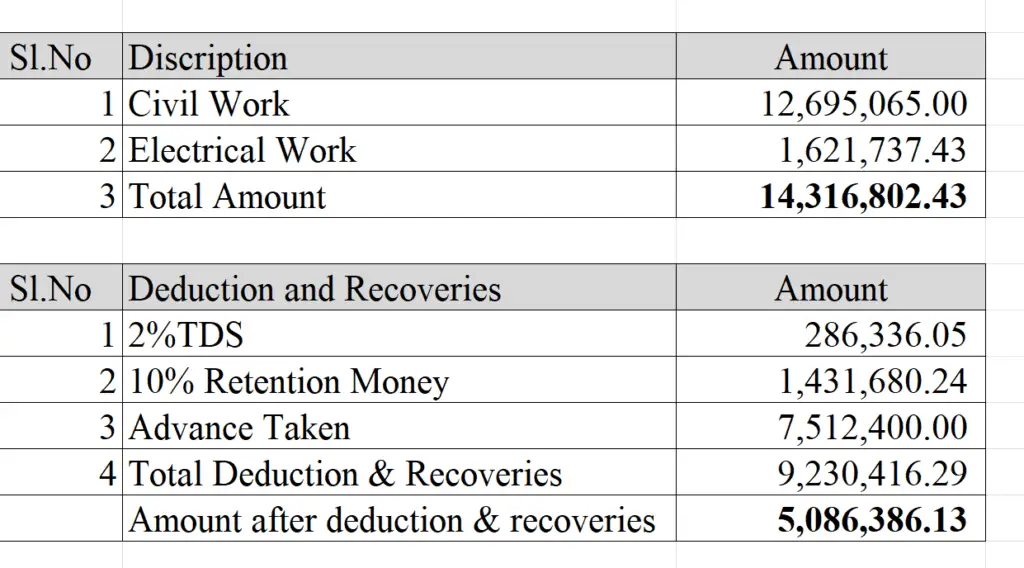Retention money, often referred to as retention or simply “retained funds,” is a crucial financial mechanism in the realm of construction projects. It is a practice employed to ensure that contractors and subcontractors meet their contractual obligations, delivering quality work within specified timeframes. This financial arrangement acts as a form of security, safeguarding the interests of both parties involved in the construction process.
Definition
Retention money is a percentage of the contract value withheld by the client (usually the project owner or main contractor) from the payments made to the contractor or subcontractor. This amount is set aside and only released upon successful completion of the project or specific milestones. The purpose of retention money is multifaceted:
Purpose of Retention
- Quality Assurance: Retention money serves as an incentive for contractors to deliver high-quality work. By withholding a portion of the payment until the completion of the project, clients can encourage contractors to adhere to specified standards and requirements.
- Defects Correction: Retention provides a financial cushion for the client in case any defects or issues arise after the project’s completion. The retained funds can be used to rectify such problems, ensuring the final deliverable meets the agreed-upon standards.
- Timely Completion: The retention mechanism promotes timely project completion. Contractors have a vested interest in finishing the project efficiently to receive the retained funds, thereby minimizing delays and potential financial losses.
Amount of Retention Money
The amount of retention in a construction project is typically determined as a percentage of the total contract value. The specific percentage can vary and is negotiated and agreed upon between the client (usually the project owner or main contractor) and the contractor or subcontractor. Common retention rates often range from 5% to 10% of the contract value, although percentages outside this range are not uncommon.
Also, read: Subcontractors: Their Role and Impact on Construction
Limit of Retention
The amount of retention money is typically negotiated and agreed upon between the client and the contractor, commonly falling within the range of 5% to 10% of the total contract value. However, specific terms and percentages are outlined in the construction contract, and they can vary based on the nature of the project and the agreements reached between the parties involved.
Deduction of Retention
The retention money is retained from every running account bill of the contractor for certified works. The amount to be retained is usually between 5 to 10% of the contract amount. The example below shows the amount of 10% of the total amount is withheld as rotation money.

Release of Retention
Release of Retention is based on specific conditions, typically outlined in the construction contract. The release often occurs in stages aligned with project milestones or phases. Common criteria for releasing retention money include the project’s completion or the entire scope of work, the submission of necessary documentation (such as completion certificates, handover notes, and bank guarantees), and the resolution of any outstanding issues. Usually, retention monies are released in 2 stages of the construction project.
Stage 1: Release of the first half
The first half of the retention money will be certified and released on the completion and certification of the whole of the work. If any defective work or outstanding work is uncertified during the certification of completion, the contractor or subcontractor is promptly notified to address and rectify such issues. If the contractor neglects to fulfil the required work, a specified amount is deducted to cover the completion of the outstanding tasks.
Stage 2: Release of the second half
The second half of the retention money is typically certified and released upon the expiry of the defects liability period. This process ensures that the contractor or subcontractor has successfully met the agreed-upon standards and fulfilled their contractual obligations till the expiry of the defects liability period. The defects liability period is usually 6 to 12 months and also can go up to 24 months.
Bank Guarantee and Retention Money
The bank guarantee is required to claim the second half of the retention amount only. The bank guarantee should remain valid until the issuance of No Defects Liability Certificates by the Project Manager, confirming the satisfactory rectification of all defects reported to the Contractor within the specified period.
Also, read: Defects Liability Period (DLP) in Construction: What is it?
FAQs:
Q: What is Retention Money?
Ans: Retention money is a percentage of the contract value withheld by the client to ensure that contractors and subcontractors meet their contractual obligations. It is a form of security to guarantee quality work and timely project completion.
Q: When is retention money released in a construction project?
Ans: Retention money is released in two stages, corresponding to project milestones or phases. It is often contingent upon the completion of the entire project, the submission of required documentation, and the resolution of any outstanding issues.
Q: How long does the retention period typically last?
Ans: The retention period varies and is specified in the construction contract. It commonly lasts until the project’s completion, the issuance of No Defects Liability Certificates, or the satisfaction of other contractually defined conditions.
Q: What is a bank guarantee in relation to retention money?
Ans: A bank guarantee is often required to accompany retention money. It ensures that the funds are available for release if the contractor fails to rectify defects or complete outstanding work within the agreed-upon timeframe.
References:
- Retention money. (n.d.). CEOpedia | Management Online. https://ceopedia.org/index.php/Retention_money
- Gamage, A. (2019, September 25). What is Retention Money in Construction Contracts. Sihela Consultants. https://sihelaconsultants.com/retention-money-in-construction-contracts/
![]()







